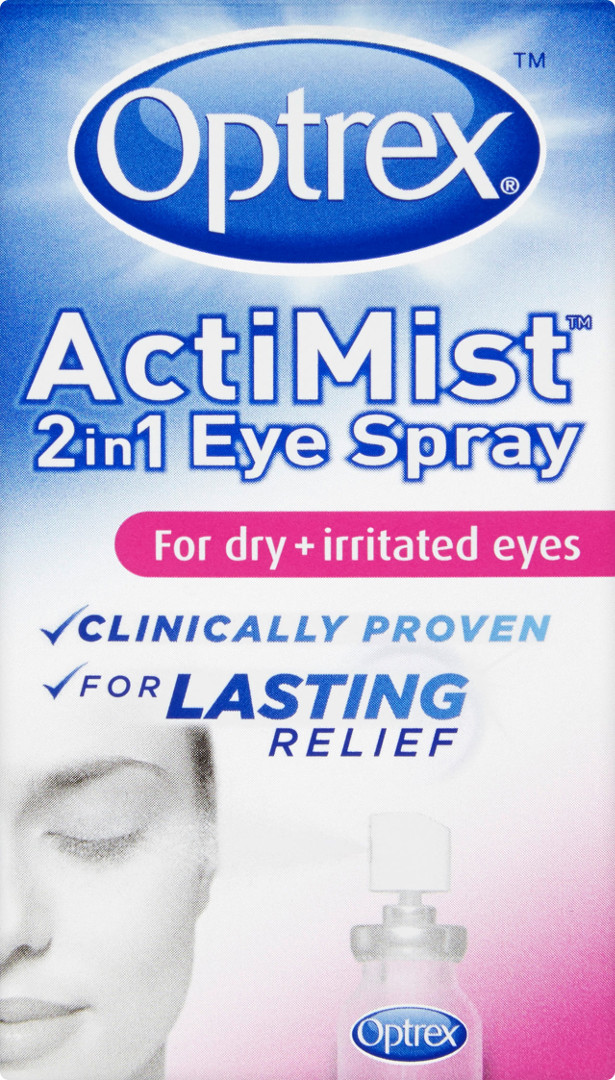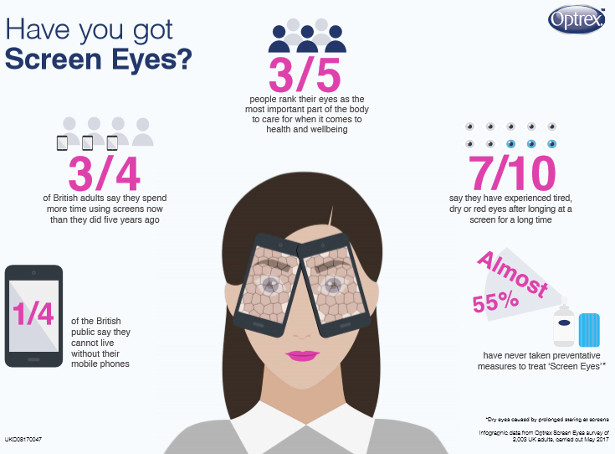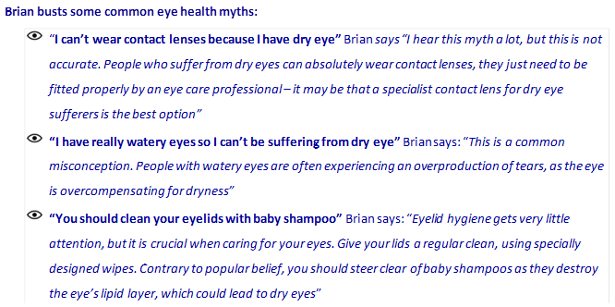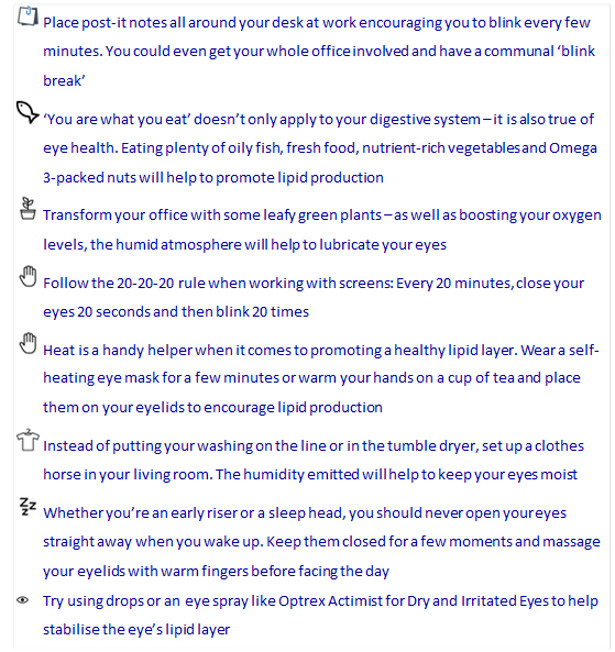The nation is glued to screens – but what does this mean for our eyes?

Technology is playing an increasingly important role in our lives, with British adults spending approximately eight hours a day looking at screens.[i] Whether it’s typing on a computer at work, keeping up-to-date with friends on a smartphone or catching up with the newest TV shows, screen time is a significant part of modern life.
Three quarters of those surveyed in a new study admitted to spending more time looking at their screens now than they did five years ago (77%), [ii] demonstrating the nation’s growing use of digital devices. Only one in five (21%) said they could live without technologies like mobile phones, laptops and iPads.ii However, this use could be exacerbating dry eye symptoms as staring at a screen reduces the eye’s blink rate by up to 60%,[iii] potentially triggering dryness, grittiness and soreness.[iv]

In light of the nation’s growing reliance on technology, leading eye care specialist Optrex is working with top optometrist Brian Tompkins to put the spotlight on the nation’s ‘Screen Eyes’ , providing handy tips and advice to manage the condition.
So what exactly are Screen Eyes*?
Having dry eyes is a common condition: it occurs when your eyes don’t produce enough tears, or the tears evaporate too quickly, leading to the eyes drying out and becoming red, swollen or irritated. It can happen when the complex tear production process is disrupted in some way.[v] One frequent cause of dry eyes is the oily layer of tear film or ‘lipid layer’ being compromised, as this is responsible for preventing evaporation.[vi]
There are many different reasons why this can happen: a hot or windy climate, contact lens use, underlying medical conditions (such as blepharitis) or side effects from certain medications can all be responsible for dry eye syndrome. Screen Eyes can cause and magnify dry eye symptoms further, as we blink considerably less when concentrating on digital displays.iii Brian comments “While ‘Screen Eyes’ symptoms are often mild, having irritated or gritty eyes can be a nuisance and disruptive when you’re trying to go about your day. I find that sufferers don’t link dryness or soreness to staring at their screen or recognise that it could be exacerbating their symptoms. The first step we should take as eye health practitioners is to educate people about ‘Screen Eyes’ and help them both recognise the symptoms and manage them. There is currently a lot of confusion on this topic.”

Are we doing anything about it?
Seven in 10 (70%) reported experiencing symptoms such as dryness, tired eyes or redness when staring at screens for a long period of time.ii
The majority of those surveyed noted the importance of taking measures to combat Screen Eyes (78%), yet 55% had never taken preventative measures to combat the condition. When questioned on the measures used to manage the symptoms, the most common remedial action was looking away from the screen (60%), followed by resting eyes or going to sleep (52%) and rubbing eyes (39%). Only 15% said they had used eye care products.ii
Brian comments on the findings: “It’s unsurprising that people aren’t taking preventative measures to combat the effects of ‘Screen Eyes’ – I often find that people have no idea where to start. It’s clearly unrealistic to advise people not to use screens, as they’re often a fundamental part of both professional and personal lives.”

Managing Screen Eyes
Many people experiencing dry or irritated eyes when using screens simply put up with it, unaware that simple actions could help to manage their ‘Screen Eyes’. Brian has compiled some straightforward advice to help combat the symptoms:

[i] Ofcom. Communications market report 2016. [Last accessed August 2017]
https://www.ofcom.org.uk/__data/assets/pdf_file/0024/26826/cmr_uk_2016.pdf
[ii] Optrex Screen Eyes survey of 2,003 UK adults, carried out May 2017
[iii] Blehm C et al. Computer Vision Syndrome: A Review. Surv Opthalmol. 2005 May – Jun; 50(3):253-62
[iv] NICE CKS – dry eye syndrome. [Last accessed August 2017]
[v] NHS Choices, Dry eye syndrome, http://www.nhs.uk/Conditions/Dry-eye-syndrome/Pages/Introduction.aspx [Last accessed August 2017]
[vi] Foulks GN. The correlation between the tear film lipid layer and dry eye disease. Surv Ophthalmol. 2007 Jul-Aug; 52(4):369-74. https://www.ncbi.nlm.nih.gov/pubmed/17574063 [ Last accessed August 2017]
vii Lennerstrand, G. Strabismus and eye muscle function. Acta Ophthalmol Scand. 2007 Nov ;85(7):711-23. https://www.ncbi.nlm.nih.gov/pubmed/17944625 [Last accessed August 2017]






